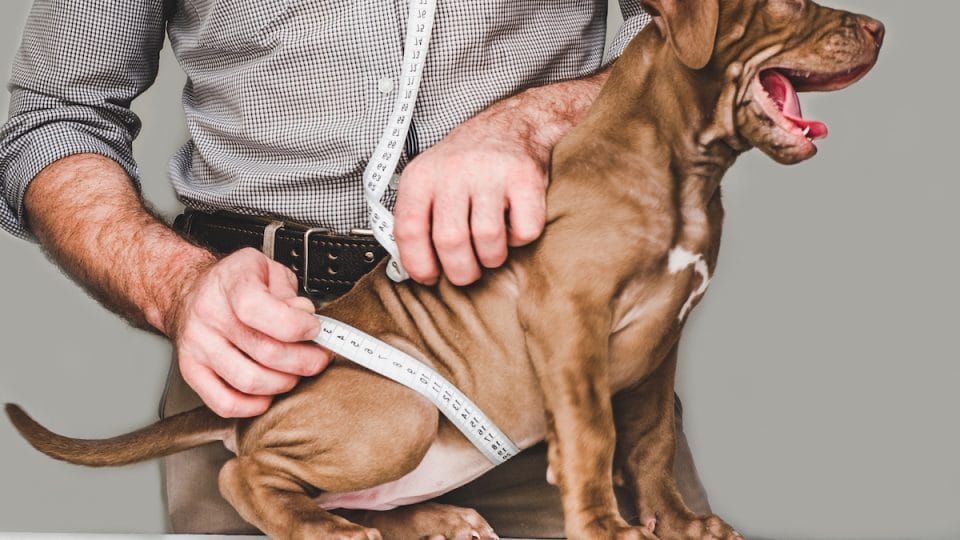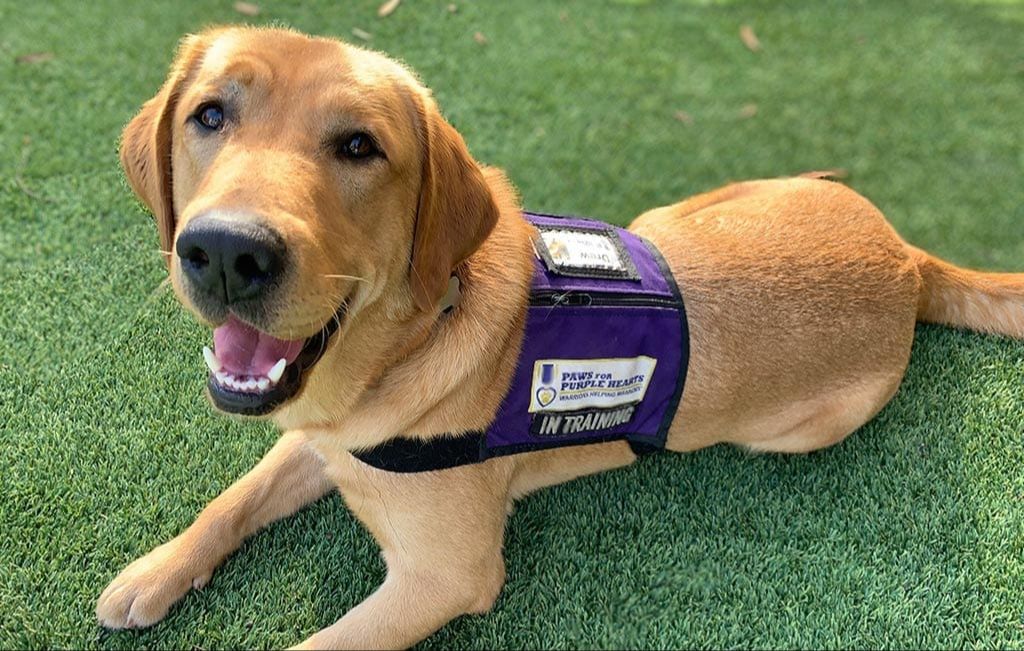Introduction
A service dog vest is an article of special equipment that identifies the dog as a working service animal, providing assistance to a person with a disability. Wearing a properly fitting vest is an important part of public access rights for service dog teams. For a service dog vest to fulfill its function, it needs to fit the individual dog correctly.
This article will cover the purpose and importance of service dog vests, key factors in fit and sizing, how to properly measure your dog, fitting and trying on vests, what constitutes an ideal fit, making adjustments as needed, replacing outgrown vests, and special considerations for different breeds and body types. Properly outfitting a service dog with a well-fitted vest is essential for clearly indicating their working status, working comfortably, and avoiding disruptions in public.
Purpose of the Service Dog Vest
A service dog’s vest serves several important purposes. First and foremost, the vest identifies the dog as a service animal rather than a pet. Under the Americans with Disabilities Act (ADA), service animals must be allowed access to all public places where pets are prohibited. The vest indicates the dog’s status as a working service dog.
Additionally, service dog vests often have pockets and handles to assist with various working tasks. The pockets can hold items for retrieval or scent detection work. The handles provide a place for the handler to grab and guide the dog. Some vests have rigid or padded handles to provide extra leverage if needed.

The vest also identifies the dog as “working” and not to be distracted. This cue helps the general public understand they should not interfere with a service dog when it’s wearing a vest.
In summary, the service dog’s vest serves several purposes critical to its working function – indicating it’s a service dog, providing task assistance, and identifying its status as “on duty” (Source: https://newszkz.com/unfortunately-inflation-stays-put-no-recovery-in-sight-for-your-purchasing-power/amp/). Having a properly fitted vest is important for meeting these functional needs.
Factors in Fit
When selecting a service dog vest, it’s important to consider factors like your dog’s measurements, the type of material the vest is made from, the climate where it will be worn, and allowances for growth if your dog is still young.
To find the right size, you’ll need to take measurements of your dog’s chest, neck, and back length (from the base of the neck to the base of the tail). Comparing these measurements to the sizing charts provided by vest manufacturers will help determine the best fit (source).
The type of material the vest is made from should suit the climate where it will be worn. Lightweight, breathable fabrics like cotton or mesh are good for hot weather, while durable, weather-resistant materials like nylon work better for rain and snow (source).
For young dogs that are still growing, adjustability is key. Vests with adjustable straps or room to let out seams allow the vest to be resized as the dog grows (source). Budgeting for a replacement vest once growth slows may also be wise.
Measuring the Dog
Properly measuring your dog is crucial for getting the right vest fit. There are three key measurements to take:
- Length – Measure from the base of your dog’s neck to the base of the tail. Add 2-3 inches for growth room.
- Girth – Wrap a soft measuring tape around the widest part of your dog’s chest, just behind the front legs. Make sure it’s snug but not tight. Add 1-2 inches for growth.
- Neck Size – Measure around the neck where a collar sits. Add 1 inch for growing room.
For young puppies still growing, allow even more room in your measurements. Growing puppies will need new vests more frequently.
Here is a helpful video showing how to properly measure your dog for a vest:

Measuring carefully and allowing room for growth will ensure the vest fits comfortably as your puppy matures. Double check your measurements before ordering.
Trying on the Vest
It’s critical to have your service dog try on the vest before going out in public with it. You’ll want to check the coverage and range of motion, look for any rubbing or gaps, and ensure the vest isn’t too tight. Proper positioning of handles and pockets is also important.
When trying on the vest, make sure your dog can sit, lie down, walk, run, and preform tasks while wearing it without any rubbing or constriction of movement. The vest should not ride up on the dog’s body when in motion. There should be enough room for your dog to pant and breathe comfortably. Handles and pockets should be positioned ergonomically so they don’t chafe or impede your dog’s gait.
Look closely for any gaps in coverage around the neck, chest, or belly. The vest should cover your dog’s back and sides without sagging or moving around. Velcro or buckles should be snug enough to keep the vest securely in place, but not overly tight. If your dog shows signs of discomfort like whining, panting excessively, or trying to remove the vest, it likely needs adjustment.
Take your time fitting the vest and make any needed modifications before relying on it for public access. An improper fit could injure your dog or hinder their ability to assist you, so getting the right sized vest adjusted correctly is well worth the effort. Don’t hesitate to exchange sizes or add extensions if needed to find the ideal fit.
Ideal Fit
The ideal service dog vest should cover the chest and back without shifting around. There should be enough room for the dog to move comfortably and easily while wearing the vest.
The handles and pockets on the vest should be placed in spots that allow for easy access when needed. According to [source], the handles should be positioned “so that the dog is easily controlled without having to bend down.” The pockets should not rub or sit too close to the dog’s legs or joints.
When properly fitted, the vest should not dig into the dog’s skin or chafe. It’s important to get an accurate measurement and try on multiple sizes to find the best fit for your individual dog. The vest should be snug but still allow for a full range of motion. With the right fit, the vest will stay in place during working situations without restricting the dog’s abilities.
Adjustments
Most service dog vests come with adjustable straps so you can get a proper fit for your dog. This allows you to tighten or loosen the straps as needed. It’s important to get the right snugness – not too tight but also not too loose.
You’ll want to check the fit periodically, especially if your dog’s weight fluctuates. For example, you may need to loosen the straps in the winter when your dog grows a thicker coat, and tighten them up again in the summer when the coat sheds. Pay attention to any rubbing that could irritate your dog’s skin.
Adjust the straps so the vest doesn’t slide around but also doesn’t constrict movement. Your dog should be able to walk, run, sit, and lie down comfortably. Get help from a second person to check the tightness while your dog moves around.
Refer to your vest manufacturer’s instructions for guidance on properly adjusting the fit. And don’t forget to periodically check that the vest still fits well as your dog ages!
Replacing Outgrown Vests
As dogs grow, especially during their first two years, it’s important to check the fit of their service dog vest regularly and be prepared to replace it when needed. There are a few key things to keep in mind for this transition process:
Measure your dog’s chest girth, neck size, and length every 2-3 months once they reach 6 months old to monitor growth (reference). When their measurements increase by more than an inch or two, it’s time to start looking for a replacement vest.

When introducing a new vest, use positive reinforcement and treats to help your dog feel comfortable with the change. Put the vest on for short periods at first, then increase the duration. Allow them to get used to the new sensation before relying on it for long work sessions.
Properly retire old service dog vests – avoid simply throwing them away. Some options are repurposing the materials, donating to training programs, or giving it to your dog as a comfort item (reference). This respects the role the vest played in your partnership.
With proper planning, patience, and positive reinforcement, transition periods during service dog vest replacements can go smoothly for both partners.
Special Considerations
When selecting a service dog vest, it’s important to consider any special needs or conditions of the dog that may impact the ideal fit and comfort of the vest. Some considerations include:
For dogs with sensory issues, such as sensitivity to textures or pressure points, look for a vest made of soft, breathable fabric without any rough seams that could irritate the dog’s skin. Avoid vests with a lot of buckles, clasps, or dangling pieces that could overstimulate the dog. A simple, lightweight vest is best. According to the Tips for Selecting the Right Service Dog Vest, “Nylon and cotton blended materials make excellent choices for service dog vests.”
Very small or large dogs may need custom-sized vests that properly fit their body type. Make sure to precisely measure the dog and order a vest specifically suited for that size. Do not size up or down. An ill-fitting vest can be uncomfortable and shift around on the dog’s body. For hard-to-fit dogs, look for vests advertised as fully adjustable or made-to-measure.
Elderly dogs often have joint issues or limited mobility. Opt for a lightweight, low-profile vest that won’t put undue strain on sore joints when the dog is working. Avoid any heavy buckles or attachments. Allow the dog to try on vests before purchase to assess comfort and range of motion.

For dogs with medical conditions like allergies, arthritis, injuries or sores, select a vest made of hypoallergenic, non-irritating materials. Look for soft, padded vests that don’t rub or dig into any sensitive spots. Let any wounds or skin irritation fully heal before using the vest.
Conclusion
In summary, the proper fit of a service dog’s vest is essential to ensure comfort, functionality, and correct identification. When measuring, trying on, and adjusting the vest, it should allow full range of motion without rubbing or chafing, and all labeled patches should be clearly visible. The vest should be snug but not constricting across the dog’s chest and around the girth. Allow room for growth, especially for young dogs, and check the fit regularly. As your service dog grows, you may need to make temporary adjustments to the vest, or replace it entirely. With a properly fitted vest, your dog can focus on the job at hand – providing invaluable service and assistance.
